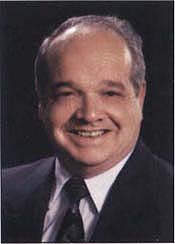All Issues
New technology delivers in new ways
Publication Information
California Agriculture 50(3):2-2.
Published May 01, 1996
PDF | Citation | Permissions
Full text
“Research is never completed until its results are in the hands of the men and women on the soil,” UC President Robert Gordon Sproul observed 50 years ago — in the first California Agriculture. The new periodical, he noted, would “bring the farmer knowledge of projects launched, and of progress as it is being made.”
At that time there were 9.6 million Californians; 568,000 were farmers and their families. Their primary sources of information were newspapers, magazines, books and radio.
Today there are 32 million Californians; 35,000 are farmers and their families. Now highly urbanized, Californians send and receive information through an array of technologies. Looking ahead, the state's population is expected to double to 63 million by 2040, becoming even more diverse.
Since 1946, the Division of Agriculture and Natural Resources' programs have expanded greatly to address the complex problems and issues that face the state's residents. But resources for the University of California diminished significantly in the 1990s. In the future, both federal and state funding are expected to decrease relative to the demands of our growing population.
How will we continue to deliver UC research and programs to all Californians? New technologies, such as e-mail, the Internet, and compressed video lines, are beginning to provide answers.
Already we can use e-mail to exchange messages with counterparts anywhere in the world, almost instantaneously. Since the World Wide Web and browsers such as Netscape became widely available in 1993, we have been able to receive powerful graphics, images and even videos on home and office computers. Those of us who have installed desktop videos can transmit our faces as well as our voices. In just a few years, the equivalent of the Library of Congress will be available on everyone's desk through the computer.
Growth on the Internet has been explosive. The number of Internet users is between 20 million and 30 million, and it is estimated to be growing at 14,000 to 28,000 per day, approaching 1 million per month. The number of World Wide Web sites, or home pages, is estimated to double every 53 days. (The current number is thought to exceed 8 million.)
What does that mean for California users? Is anybody out there receiving all this information? Surveys indicate that, increasingly, the answer is yes. In a statewide survey of pest control advisors sponsored by the California Agricultural Production Consultants Association, 71% reported they had access to computers on a regular basis. In addition, 34% had access to e-mail on a regular basis.
Data from Division programs indicate Internet use is significant. From January to April of this year, UC Integrated Pest Management computer staff logged 1,100 pest management guidelines retrieved from the IPM Web site. The site features printed text illustrated with photos, drawings and other graphics, and links them to related subjects. For example, when reading the Web guidelines on managing codling moths in apples, users can click on the word “larva” to see a picture of a codling moth in the larval stage.
Other technologies that can facilitate program delivery include multi-site video and audio links, satellite uplinks and downlinks, and online library catalogs and materials.
For instance, compressed video signals sent over telephone lines enable teachers and students at distant sites to see each other and interact in the same video-linked classroom. Don Klingborg, Director of Veterinary Medicine Extension, has used this technology to teach advanced dairy herd medicine simultaneously at UC Davis and the Tulare Veterinary Medicine Center.
Similar technology links all nine UC campuses, and has been used to connect classrooms in UC and other state universities, extending faculty expertise for the benefit of all students.
DANR has recently brought on line a state-of-the-art satellite downlink system called CE Link. By fall of this year, 33 county office and field station sites will have the capability of receiving satellite programs.
Increasingly, Division faculty design instruction using a combination of technologies. Recently, specialist James Oltjen took advantage of a satellite feed from the National Research Council (NRC) in Washington D.C. He brought together 30 livestock advisors and industry consultants from across the state to a satellite-receive site at UC Davis. They joined a national audience of 1,000 to learn the NRC's new nutritional standards for beef cattle. Oltjen followed with on-site training in the use of computer models to calculate cattle requirements.
UC's Intercampus Academic Program Incentive Fund encourages faculty to develop and implement strategies for instruction across campuses, particularly those utilizing interactive technologies. To date, 48 projects have been funded, including one which is a collaboration between UC Riverside and UC Davis to develop a multimedia database for course materials in nematology. The database will be placed on a dedicated teaching server accessible to students from both campuses via the World Wide Web.
Learning is no longer bound to a particular classroom or campus. Increasingly, the university can exist wherever appropriate technology is in place.
If we are to put research results in the hands of those who can use it, we cannot rely on just one medium but must combine all of them. Technologies must be merged and instruction designed to meet the needs of the audience. The University should increasingly emphasize its role as a place where knowledge cannot only be generated, but also delivered, explained and understood. Our ultimate challenge is to help people educate themselves in a learning environment which is changing dramatically.
California Agriculture's homepage address is: http://www.ucop.edu/anrhome/cal-ag/about_ca.html





